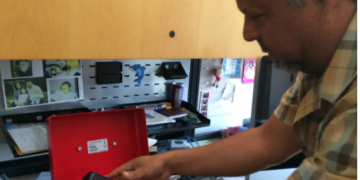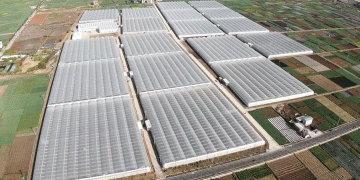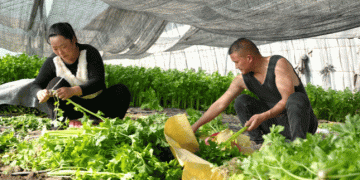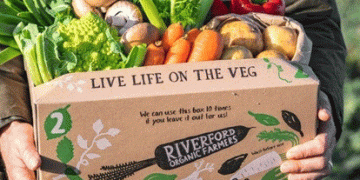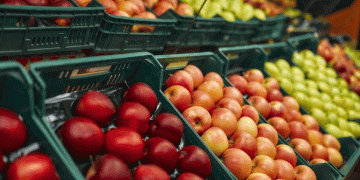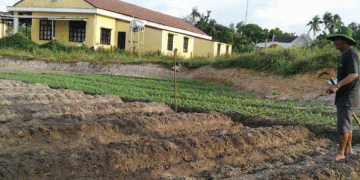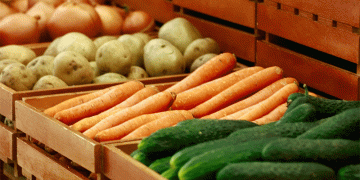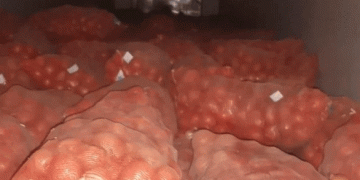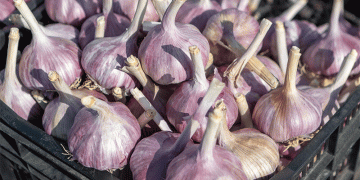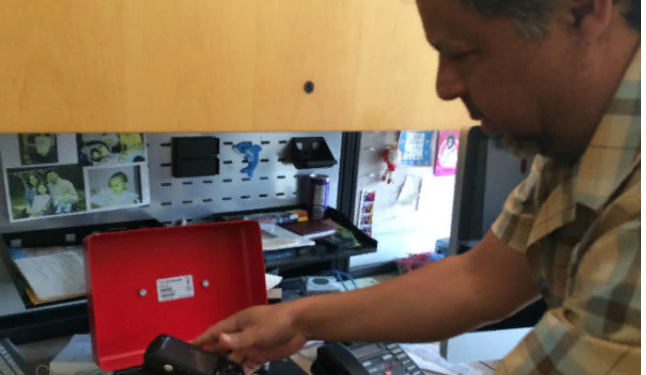Food quality tests that traditionally take hours – or days – to perform in the lab now can be completed in just minutes, without the need to even step away from the production line.
“This is a game-changer for the industry. It allows you to get out of the lab and test in the production line or even in the field,” said Luis Rodriguez-Saona, professor of food science and technology at The Ohio State University.

For the last 16 years, the food scientist with Ohio State’s College of Food, Agricultural, and Environmental Sciences has been examining the use of infrared technology to determine the quality of food products. Rodriguez-Saona also is a scientist with the Ohio Agricultural Research and Development Center, the research arm of the college.
Within the last four years, portable scanners have emerged on the market, and his legwork has proved invaluable in adapting them to the needs of the food industry.
“With tomato juice, we can look at 12 different attributes in less than a minute,” Rodriguez-Saona said. “All this would take multiple hours, if not days, to collect and test one sample the traditional way.”
Among other collaborations, for the past five years Rodriguez-Saona has contracted with the California League of Food Processors to test tomato juice and tomato paste. California produces more than 90 percent of the nation’s processed tomatoes and nearly half the processed tomatoes grown worldwide.
“The operation is amazing,” Rodriguez-Saona said. “They have so many production lines, and every hour they send samples to the lab to monitor the quality of different batches.”
Such testing is required to ensure the safety and quality of the tomato juice, much of which goes on for further processing into tomato paste and other products.
Currently, the industry is using the technology to supplement traditional monitoring, but the work of Rodriguez-Saona could be instrumental in getting approval to use it as its primary testing method. So far, Rodriguez-Saona has published five scientific papers on using infrared technology for processing tomatoes.
“Now, they take samples, bring them to the quality assurance lab, and it takes several hours to complete some of the tests. They also need skilled personnel to do this work. It is time-consuming and costly.”
If the testing identifies any issues with the product, the processor would need to sell it at a discount or reprocess it.
“But with this unit – it’s so small, like a lunchbox – you can bring this into the plant to make real-time assessments of the quality of the product, and make tweaks to the processing immediately instead of waiting for lab results to come back.”
In his studies, Rodriguez-Saona uses infrared sensors made by leading developers, including Agilent Technologies and Thermo Fisher Scientific. The portable infrared light instruments were initially designed for the Department of Defense, the Drug Enforcement Agency and the pharmaceutical industry to identify the presence of explosives and illicit drugs and to test pharmaceuticals for counterfeits. Some of the portable scanners are as big as toolboxes and others are hand-held.
“We are the first ones to obtain these instruments to look at applications in the food industry,” he said.
The process for testing is deceptively simple: A sample of the product, smaller than a pea, is placed on the scanner or is scanned with the hand-held spectrometer. An infrared light targets specific functional groups in the molecules that make up the food; different molecules absorb the light at different frequencies.
“This produces a spectrum, which is based on that light absorption,” Rodriguez-Saona said. “We subject that spectrum to multivariate analysis to pinpoint the information we are looking for.
“I equate the spectrum to a panoramic photo. It contains a lot of information, but to find the information you are looking for, you need to study it closely. The multivariate analysis is like a magnifying glass that allows you to do that, using chemometrics to identify a specific signal that is associated with a specific molecule.
“Basically, it’s like finding Waldo.”
Rodriguez-Saona has developed the algorithms for the scanners to use in detecting different aspects of the food items, and his studies verify that the results are on par with those from traditional lab tests. Food attributes tested in processed tomatoes focus on consistency, texture and flavor, including soluble solids, pH, acidity, viscosity, sugars and organic acids.
In addition to the processed tomato work, Rodriguez-Saona and his team of graduate students have studied different attributes of potato chips, including an assessment of oil quality and the presence of acrylamide.
Oil quality is an issue, as edible oils and fats are one of the most counterfeited foods in the industry, and traditional methods for testing them are time-consuming, complicated and costly and generate large amounts of waste, Rodriguez-Saona said. In July, he is moderating a session, Economically Motivated Adulteration: Challenges and Innovations in the Detection of Food Fraud, at the Institute of Food Technologists annual meeting in Chicago, and will present on portable technologies to screen for food adulterants.
The presence of acrylamide in potato chips and other types of potatoes fried at high temperatures has long been an issue in the industry, and in 2010, the Joint Food and Agriculture Organization and a committee of the World Health Organization named it a human health concern. But the equipment needed to test for acrylamide is cost-prohibitive for most companies to run tests on their own, and sending samples to a third-party lab can take weeks to get results, he said.
“Acrylamide levels are currently regulated only in California as part of Proposition 65, officially known as the Safe Drinking Water and Toxic Enforcement Act of 1986, but I have been talking a lot with companies and they want to find a cost-effective way to measure for it. So, we’re working to develop that.”
Rodriguez-Saona is also applying for funding from the U.S. Department of Agriculture.
“Right now, we work with companies and develop algorithms that fit their unique applications. But with USDA funding, we would be able to work on some of these major problems, like acrylamide or adulteration, and develop algorithms to conduct infrared testing on foods that would be available to anyone.”
Food manufacturers in Ohio and elsewhere interested in learning more about the technology may contact Rodriguez-Saona via email at rodriguez-saona.1@osu.edu or call 614-292-3339.
